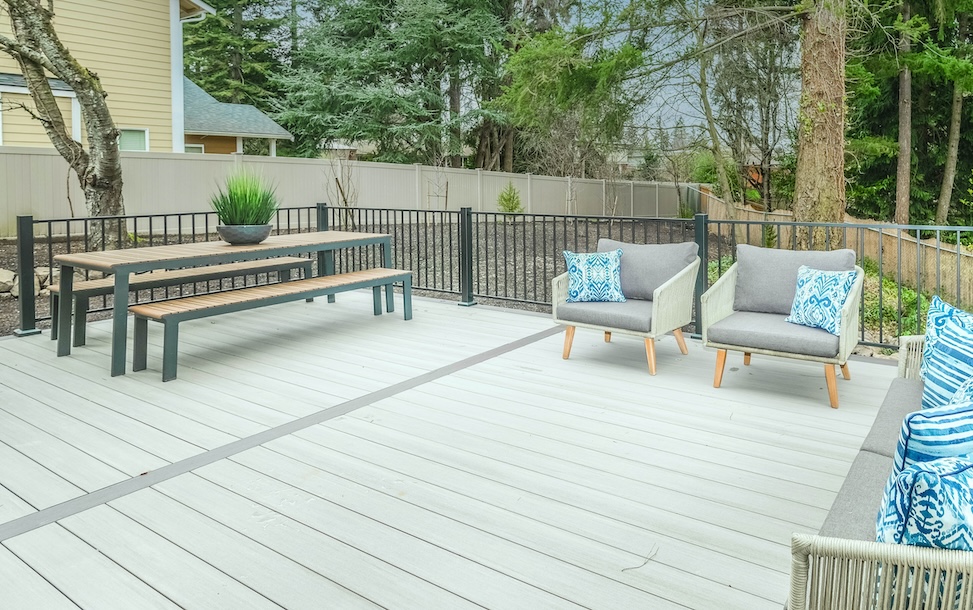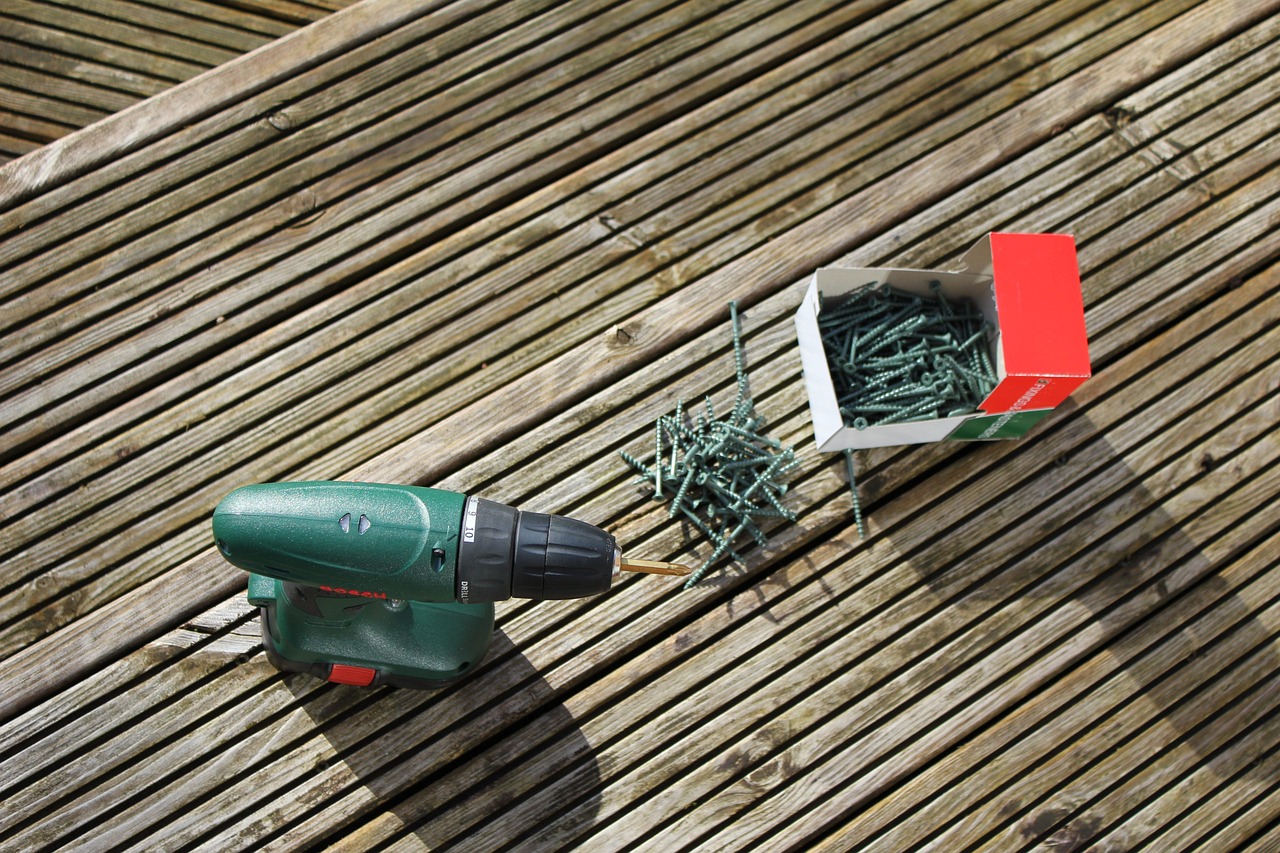1.Composite Decking:
Pros of Composite Decking:
A) Low Maintenance: Composite decking is relatively low maintenance. It doesn't require regular staining or sealing and is resistant to rot, mould, and insects.
B) Durability: Composite decking is designed to withstand the elements, making it a long-lasting choice. It won't warp, crack, or splinter like wood can over time.
C) Colour and Style Options: Composite decking comes in a wide range of colours and styles, allowing you to find a look that matches your aesthetic preferences. All without needing to stain them each year!
D) Eco-Friendly Options: Some composite decking brands offer environmentally friendly products made from recycled materials.
E) Safety: Many composite boards have a textured surface that provides better traction, reducing the risk of slipping, especially in wet or icy conditions.

Cons of Composite Decking:
A) Initial Cost: Composite decking tends to be more expensive upfront compared to wooden decking. However, the long-term savings in maintenance costs can offset this.
B) Heat Retention: Some composite boards can become hot to the touch in direct sunlight, which might not be ideal for barefoot walking.
2.Wooden Decking:
Pros of Wooden Decking:
A) Natural Aesthetic: Wooden decking provides a warm and natural look that many find appealing. It can enhance the visual charm of your outdoor space.
B) Cost: Wooden decking is often more budget-friendly upfront compared to composite options.
C) Variety of Wood Types: Different wood species offer various colors and grain patterns, allowing you to choose a wood that suits your design preferences.
D) Easy to Work With: Wood is relatively easy to cut, shape, and install, making it a good choice for DIY projects.

Cons of wooden decking:
A) Regular Maintenance: Wooden decking requires regular maintenance, including staining or sealing to protect it from the elements. Neglecting maintenance can lead to rot, warping, and decay.
B) Durability: Wood is more susceptible to insect infestations, rot, and weather-related damage, which can reduce its lifespan.
C) Environmental Impact: Some wooden decking comes from unsustainable sources, leading to deforestation and negative environmental impacts.
D) Colour Fading: The colour of wooden decking can fade over time due to exposure to UV rays and weather conditions.
E) Splinters and Warping: Wood can splinter, and the boards can warp or crack, leading to safety hazards and a less attractive appearance.
The choice between the two materials depends on your priorities, style preferences, and long-term budget considerations.
Hope that helps?
Lee
 Lee Burkhill: Award Winning Designer & BBC 1's Garden Rescue Presenters Official Blog
Lee Burkhill: Award Winning Designer & BBC 1's Garden Rescue Presenters Official Blog



